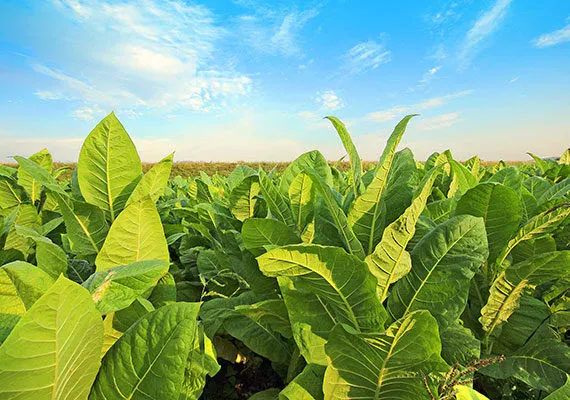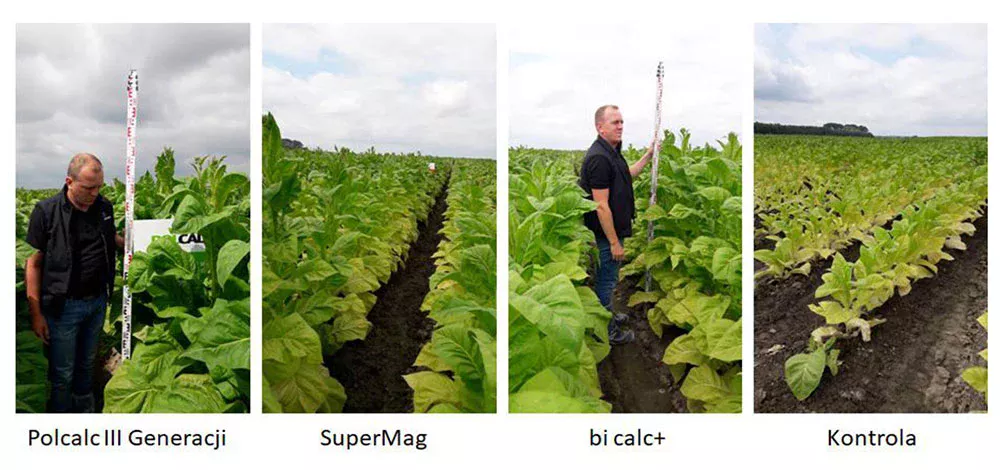
CULTIVATION OF TOBACCO IN POLAND AND WORLDWIDE
Tobacco (Nicotiana tabacum L.) is a plant known and valued for generations. It originates from South America and was brought to Europe by participants of Columbus’s expedition. Already in the early 16th century, tobacco was known and highly valued in Spain. Over time, this plant migrated to other European countries and the Middle East. It arrived in Poland in the 16th century, and thanks to Jan III Sobieski, tobacco cultivation and production developed – according to an agreement signed with France, it was supplied to King Louis XIV. However, it was only in 1922, after the establishment of the Polish Tobacco Monopoly in our country, that the cultivation of this plant began on a much larger scale.
Currently, the most important tobacco producers are: China, Brazil, India, the European Union, the USA, Indonesia, Zimbabwe, and Malawi (Tab. 1.). Among the countries of the European Union, Italy is the largest producer of tobacco. Poland ranks third in terms of the size of tobacco production. It is worth mentioning that our country is the northernmost area of tobacco cultivation, and plantations are mainly located in the southeastern region and the Grudziądz district.
The most commonly cultivated type there is Burley tobacco (Nicotiana tabacum L.) and Virginia. These varieties have diverse requirements regarding soil compactness and mineral content. For Virginia tobacco cultivation, lighter, permeable soils with lower nutrient content should be used. For Burley, on the other hand, fertile soils with regulated water conditions, moderately moist sandy-clay loams, and moderately compact clays will be suitable.
TOBACCO CULTIVATION – WHAT ARE THE REQUIREMENTS OF THIS PLANT?
A significant factor in commercial tobacco production is optimal plant fertilization determined based on previously conducted laboratory chemical analyses of soil samples. These analyses are mainly performed to assess the content of phosphorus, potassium, magnesium, and soil pH. The latter parameter is crucial for determining the effectiveness of NPK fertilization by tobacco plants, which directly affects the quantity and quality of the harvested crop.
The optimal pH for tobacco ranges from 5.5 to 6.5, for new hybrid varieties (from slightly acidic to neutral). Unfortunately, a significant portion of soils in Poland where this plant is cultivated have too low pH due to soil type and the acidifying effect of climatic conditions and mineral fertilizers used (especially nitrogenous ones). Therefore, in the case of low pH, below 4.5, soil liming should be applied as soon as possible, selecting lime fertilizers containing magnesium. A high calcium content relative to this element leads to magnesium deficiency symptoms in tobacco, significantly reducing the quality of the crop. Liming should be performed in the autumn after harvesting.
The lime should be thoroughly mixed into the plow layer of the soil during subsequent tillage. This has a positive effect on the physicochemical and biological properties of the soil and increases its fertility. It is considered that liming in spring is a less favorable and potentially dangerous practice and should be used exceptionally. Typical carbonate lime fertilizers have low reactivity, so they act very slowly, and the use of quickly acting oxide fertilizers, especially on light soil in a dose sufficient to neutralize acidification, can have a very negative impact on the soil environment, causing soil drying out and destruction of soil microorganisms (Berbeć 2010; Doroszewska and Berbeć 2015).
TOBACCO CULTIVATION TECHNOLOGY – WHAT LIME TO USE?
The information described above is accurate for most available lime fertilizers but does not take into account the use of innovative high-reactivity granulated carbonate lime fertilizers for soil acidification, such as Polcalc III Generation or SuperMag. Therefore, to demonstrate the qualitative advantage of our products over competing lime fertilizers, a field fertilization experiment was conducted in cooperation with Tobacco Łukowa company. In the spring of 2020, on a newly acquired production field, 4 plots of 1 hectare each were designated, and Polcalc III Generation and SuperMag granulated lime were applied at a constant dose of 1000 kg∙ha-1, with two control objects designated. During the tobacco vegetation, an organoleptic (visual) analysis of the effect of the applied dose (1000 kg∙ha-1) of Polcalc III Generation and SuperMag fertilizers was performed. The observation was made 12 weeks after transplanting the tobacco seedlings. A significant effect of the applied dose of high-reactivity granulated lime fertilizers on the height of plants, the number of developed leaves, and the leaf surface increment compared to plants growing on control plots where the tested agents were not applied was demonstrated (Fig. 1).

Table 1. Countries with a dominant position in tobacco production worldwide in 2013 (Laskowska and Doroszewska 2015)

Fig. 1. Tobacco height depending on the type of applied granulated carbonate lime
In summary of the data presented above, the following conclusions can be drawn: the consequences of calcium deficiency in the plant can have serious implications – from yields with small and distorted leaves to the disappearance of the growth cone. Tobacco is a plant for which any change in soil pH can be very harmful, therefore – to protect crops and achieve better results – liming should be applied.






